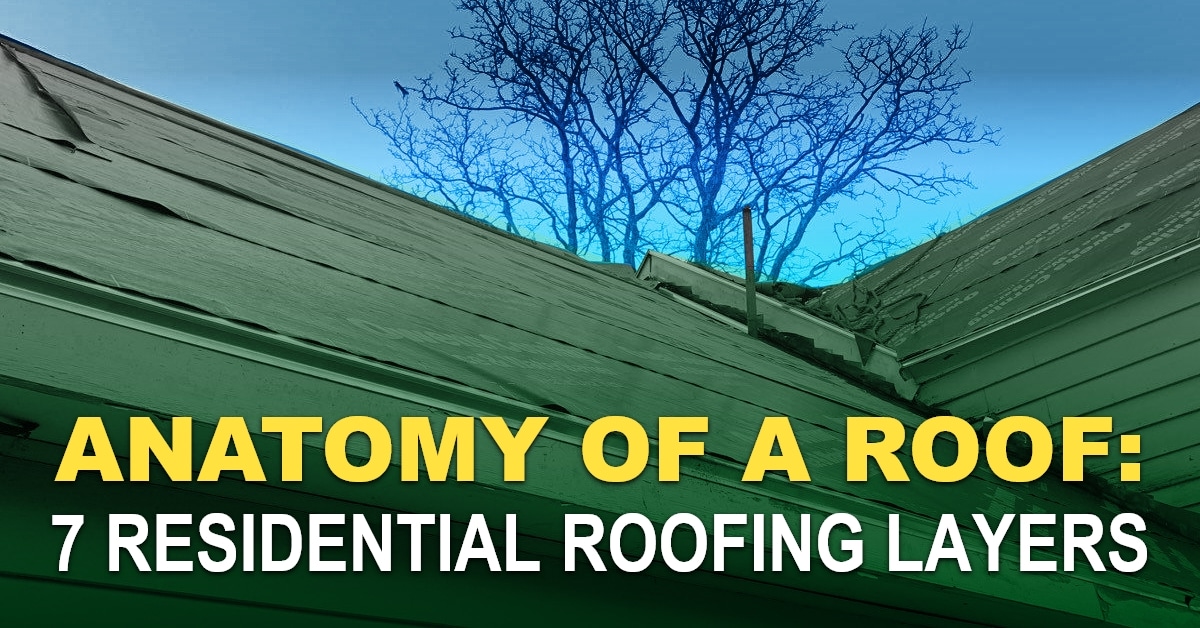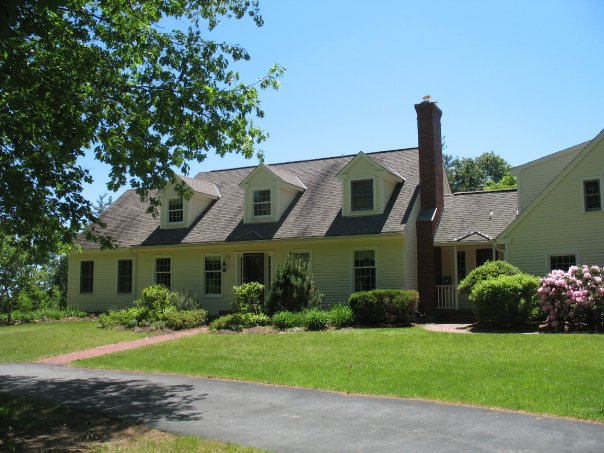When you look at your roof, you only see the top layer of shingles, metal, tile, or slate. But the truth is, your roof comprises so much more than just the layer you see. Your roof is a complex system composed of several layers of different materials designed to protect your entire home from the forces of nature outside while controlling humidity and temperature levels inside.
Every roof layer serves a specific purpose, but they all function in tandem to protect your home and enhance the comfort levels of those who live beneath it. Whether you’re getting ready for a new roofing project or just curious about what goes into a roof, here are the seven residential roofing layers to be aware of.
1. Roof Deck
The first layer of your roofing system is your roof deck, sometimes known as roof sheathing. A roof deck comprises wooden boards (planks or plywood) that make up the base of your roof.
It’s the foundation for the rest of the roofing materials and components installed on the roof. So, if your roof deck is rotten, it’ll have to be replaced when having a new roof. Only a professional roofer can tell if or how much needs replacement after tearing off your old roof.
2. Insulation
Roof Insulation is the material adopted to minimize heat transfer between the outside and inside of your building. Thermally insulated roofs provide great comfort both in cold and hot seasons. One common and effective way to insulate your roof is polyurethane spray foam. The spray-applied plastic is highly effective for sealing cracks and resisting wind and heat. In most cases, the foam is applied to the underside of the roof deck and directly onto the roofing material (tile, slate, or shingles).
3. Ventilation & Ridge vent
Roof ventilation allows your attic and home to breathe correctly. Without a proper ventilation system, the lifespan of your roof can be cut drastically. There are different roof vents to consider depending on your ventilation system. You may choose turbine vents, ridge vents with baffles, power vents, or solar-powered vents for an active ventilation system.
But for a passive ventilation system, you can choose from box vents (static vents), ridge vents without baffles, or gable-end vents. Roofing professionals often recommend active ventilation systems for performance reasons, but all the vents do a great job if appropriately installed and the attic is adequately ventilated.
4. Ice & Water Shield
Every roof requires an ice and water shield, a waterproof membrane that protects your roof from moisture damage. Its primary purpose is to protect the roof decking if water seeps underneath your roofing material (metal, slate, asphalt shingles, etc.).
Professional roofers often install ice and water shields around the roof edges, valleys, and around penetrations. It is also essential for roofs with lower pitches.
5. Underlayment
Roof underlayment refers to the felt (synthetic, 15 lb, or 30 lb felt) roofing material applied between the roof decking and shingles. It’s usually installed directly over the decking and provides an additional layer of protection from the elements. Your roofing underlayment is typically your roof’s last line of defense if water gets to the decking.
6. Flashing
Roof flashing is simply a thin metallic material designed to direct water away from some areas of your roof, such as walls, roof valleys, and chimneys. This vital roofing component is installed at the same time as your roofing shingles. Flashing can be aluminum, steel, or copper and should outlive the original roof it’s installed on. This means you may not need new flashing when getting a new roof. However, your roofing contractor must inspect the flashing as part of annual roof maintenance to help catch potential leaks.
7. Roofing Material
The top roofing material is the layer most homeowners think of when discussing a roof. It’s the top layer of your roof and will be materials such as:
- Asphalt shingles
- Metal roofing
- Synthetic roofing
- Cedar shake roofing
The roofing material is what people see from the street. If you’re not sure what type of roofing material fits your needs, consult with your local roofing contractor to find the right option.
Proper Roof Installation is Critical to the Longevity of your Roof!
Now that you know the different layers of a roof, you should note that most of these materials need to be replaced when getting a new roof. Unfortunately, these roof components mean nothing if they’re not installed correctly by a professional roofer during your replacement. Adam Vaillancourt Roofing has decades of experience installing, replacing, and repairing roofs in Southern New Hampshire and Northern Massachusetts. With our expertise, you can rest assured of quality workmanship for all of your roofing needs. Contact us today to schedule your consultation!




